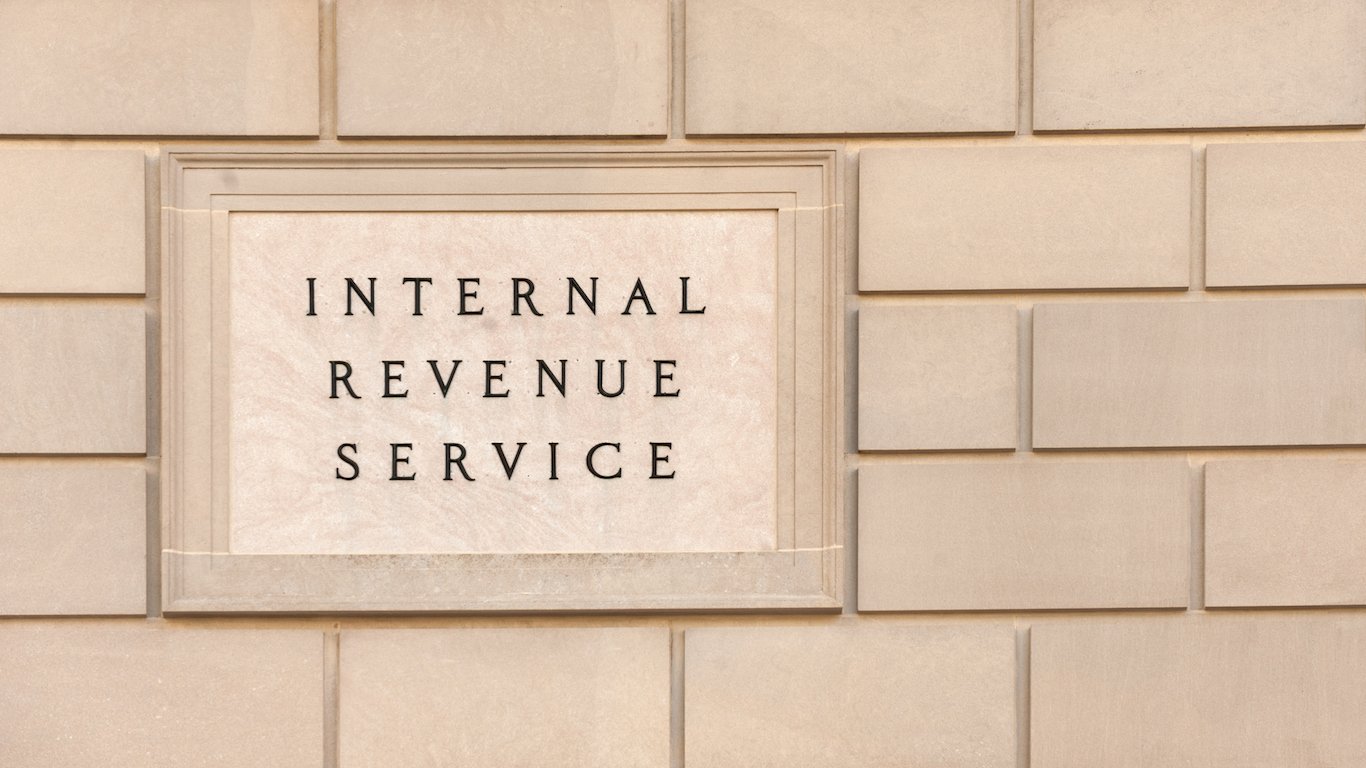10 Ways to Build $1 Million by Retirement
September 14, 2017 by Jon C. OggInvestment advisers tell you that you might need more than $1 million in assets to be able to enjoy retirement. Life’s ongoing costs are many — insurance, medicine, food, transportation, bills, vacations, and entertainment — and the ability to pay for all these expenses can be difficult when you have limited income from Social Security and retirement funds.
It is essential for savers to consider their retirement plans long before they get into their 50s or 60s. Those who start saving in their 20s and 30s will have a huge jump over those thinking about how to save when they are 10 or 15 years away from retiring. Using a traditional IRA (individual retirement account), Roth IRA, SEP-IRA, or 401(k) plan is a must for those who want a comfortable retirement.
If you have not saved much and are in the years approaching retirement, there are still actions you can take to make your golden years golden. It’s never too late to start saving, and traditional retirement vehicles are a great place to start.
Using traditional retirement plans is the most common wealth builder for those seeking a secure retirement. A combination of that, plus extra work, considering your other retirement options, avoiding some easy mistakes, and investing on the side can all get you that $1 million goal for your retirement.
Click here to see 10 ways to build $1 million by retirement.

1. Social Security Payments
The good news is you likely already saved something toward your retirement by contributing to Social Security. The vast majority of non-retirees have no clue what their social security payments will be. Fortunately, there is a Social Security calculator that shows you how much you will earn in your retirement years, whether the government says your full retirement age is 65 or 67.
[in-text-ad]

2. Traditional Retirement Plans
Whether it’s a simple IRA, a Roth IRA, or a 401(k) plan, these are all retirement vehicles for the American worker. Taxes are deferred until retirees begin to withdraw from these accounts, so this money — including the withheld taxes — can grow until then. This allows for workers to save more than $10,000 per year in many cases, and some employers match contributions.
Saving $5,000 to $10,000 a year without taxes, and then seeing that magnified by employer matching funds and compounding of dividends and interest can add up even if you are in your 50s. Everyone is a consumer, but the less you spend that you don’t have to spend gives you more money to put toward savings. All of those savings can help fund your retirement plans from IRAs to 401(k) plans.

3. Stocks, Bonds, or Cash
If you are investing in 401(k) or IRA plans, you usually control how that money gets allocated among stocks, bonds, and cash. Stocks have traditionally had the highest return and the highest risk; bonds offer steady returns and lower risk; and cash brings comfort but no returns. Choosing all bond investments in your 20s won’t provide enough growth over the next 40 years to generate a large enough retirement nest egg.
Investing in all stocks and taking too much risk in your 50s and 60s can crush a retirement portfolio if a market correction occurs in your final years before retiring. Cash never falls in value nominally, but it rarely outperforms inflation.
The general advice from financial experts is not to invest retirement funds too conservatively in your 20s to 40s, and not to invest too aggressively if you have already amassed a large retirement nest egg or if you are in your 50s and 60s.

4. Keep Working
Many people reach the traditional retirement age of 65 and keep working, some even into their 80s. Maybe they saved for retirement and work to keep busy, or maybe they need extra funds to live. Either way, working while in retirement provides extra income. The golden years are not cheap, and even if you don’t want to work 40-hour weeks you might want to work several days a week. There are opportunities as a consultant, a mentor, or even as a contract worker for companies that will want your skills from your working experience.
[in-text-ad]

5. Understand the IRS Catch-Up Rules
The government understands that many people don’t save enough and early enough for retirement. The Internal Revenue Service has rules for catch-up contributions for 401(k) and IRA plans starting at age 50. These rules allow workers 50 years old and older to add more than the statutory limits ($18,000 for 401(k) in 2017) to ramp up their retirement savings in the 10 to 15 years ahead of the traditional retirement age. This, along with any employer match on statutory limits per year, can help the under-saved catch up for their retirement years.

6. Take Advantage of Compounding Interest
Warren Buffett and other investors have preached that the compounding effect of interest and gains over time is unrivaled by any other investing metric. Compound interest is the interest you earn each year that is added to your principal, so that the balance doesn’t merely grow, it grows at an increasing rate. Earning 6% on a $100,000 investment returns $6,000 per year, or $120,000 over 20 years. If, however, the amount gained each year is added to the principal ($106,000 after the first year), the 6% return is applied to a larger sum each year and growth is compounded. After 20 years, such an investment would be worth over $320,000.

7. Never Touch Your Nest Egg
Many 401(k) and IRA investors make the mistake of raiding their retirement funds before retirement. This can jeopardize retirement plans. Sometimes there are medical emergencies; sometimes families have personal emergencies; and sometimes families just want to spend the money on remodeling the kitchen or a new car. Don’t dip into your 401(k) and IRA funds ahead of time unless there are no other choices. You will have to pay interest if you borrow against those funds. And if you take the money out of the plan entirely, you will have to pay taxes on the funds you take out.

8. Avoid Fees
Take two similar index funds that are tracking the Standard & Poor’s 500 Index. If one fund has a 1% management fee and one has a 0.2% management fee, that is a 0.8 percentage point difference cheating your retirement funds out of your money. Now, most true index funds are competing to have the lowest fund fees, and this is a win for 401(k), IRA, and other retirement investors.
[in-text-ad]

9. Don’t Time the Markets
Most 401(k) and IRA investors will not be successful timing the markets — investing at a low and divesting at a high. In fact, it may be the “time in the market’’ rather than “timing the market’’ that generates the most long-term gains for retirement investing. You can put money into the market and move into cash with every ebb and flow of the market, but your 401(k) and IRA isn’t going to grow that much if you are in cash or short-term bond funds on the few days a year that the Dow rises 200 points or more. Imagine if you were among those who sold out of stock funds in 2009 and only got back into stocks in 2017 after you felt safe. You missed 200% growth, as well as the compounding effect on the way up.

10. Invest Beyond Statutory Limits
Just because your IRA or 401(k) plans may have annual limits, with employer matching funds or not, there is no reason you cannot build up a nest egg that isn’t just in retirement funds. You can buy stocks, ETFs, bonds, mutual funds, or anything that is expected to make money outside of retirement accounts. You will have to pay taxes on capital gains, dividends from stocks, interest from bonds, and the like, but this is a sure way to accumulate wealth on top of your traditional 401(k) and IRA retirement plans.
Essential Tips for Investing: Sponsored
A financial advisor can help you understand the advantages and disadvantages of investment properties. Finding a qualified financial advisor doesn’t have to be hard. SmartAsset’s free tool matches you with up to three financial advisors who serve your area, and you can interview your advisor matches at no cost to decide which one is right for you. If you’re ready to find an advisor who can help you achieve your financial goals, get started now.
Investing in real estate can diversify your portfolio. But expanding your horizons may add additional costs. If you’re an investor looking to minimize expenses, consider checking out online brokerages. They often offer low investment fees, helping you maximize your profit.
 24/7 Wall St.
24/7 Wall St.